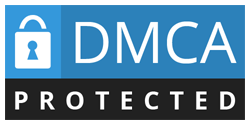Whether you are an occupational therapist, speech-language pathologist, behavioral therapist, or educator; the use of educational and psychological assessments to evaluate and diagnose patients or students helps guide your treatment strategies. Because of the integral role these assessments play in patient outcomes, it is crucial that they are up-to-date; and that administrators do not base their decisions and recommendations on obsolete measures and data. To ensure that test materials are always relevant, creators must regularly revise their assessments and encourage clients to adopt them. Below are a few good reasons why.
When Is the Right Time to Adopt Revised Educational and Psychological Assessments?

Data Grows Old
New data comes out daily regarding everything from cell phone use to autism diagnostic rates. Though some data may seem trivial, like what age a child develops the skills to use a smartphone; it can inform test materials and how clinicians score answers. For instance, with the release of the DP-3 in 2007, the iPhone was making its debut. Most children then would not have known how to operate a touchscreen device. However, when the DP-4 came out 13 years later, it was common for toddlers as young as 12 months old to know; how to operate a touchscreen phone to some degree of effectiveness. This data changes the measures against which clinicians score children for learned skills.
Also Check: Top Three Highest Paid Medical Specialties In Canada
Social Pressures Change
Social pressures drastically influence the behavioral and emotional experiences of young children and adolescents and; just as importantly, how they respond to them. For instance, when the Piers-Harris 2; a test that measures self-esteem; came out, the extent of adolescents’ social pressures occurred during face-to-face interactions and school hours. However, Piers-Harris 3 addresses how children and teens deal with social triggers constantly due to smartphones and social media. Following the lead of the Piers-Harris, other assessments, like the RCMAS-2, should also address these changes and eliminate outdated ones.
Also Check: Tips For Effective Online Teaching And Learning

Societal Expectations Shift
Finally, due to the ongoing fight for equality regardless of race, color, religion, gender, or ability; consumers expect inclusivity and diversity in everything they encounter; especially in their learning and testing materials. Tests as recent as 15 years ago do not fully reflect the advances society has made in its fight for justice; and even those from 10 years ago fall short. With each recent test released, the images and content become more diverse and, in the process, more inclusive. Inclusivity is crucial to test takers’ outcomes, as their responses are more likely to be authentic; when presented with images that represent themselves.
Also Check: Disability Employment Services – What Is It and How Will It Help You?
Be Choosy When Purchasing Assessments
The APPIC recommends that clinicians, educators, and psychologists update assessments; within six months to two years of a test’s publication date. This recommendation stands regardless of the company. However, some test creators are slow to revise testing materials to reflect recent data and societal changes. Delays can slow patients’ and students’ progress and prevent them from reaching their full potential. To ensure this does not happen, partner with a reputable developer of educational and psychological assessments like WPS Publish. Learn more about how the values of companies like WPS may align with yours.
Also Read: What Are The Benefits Of Psychometric Testing For Your Business
Sources:

